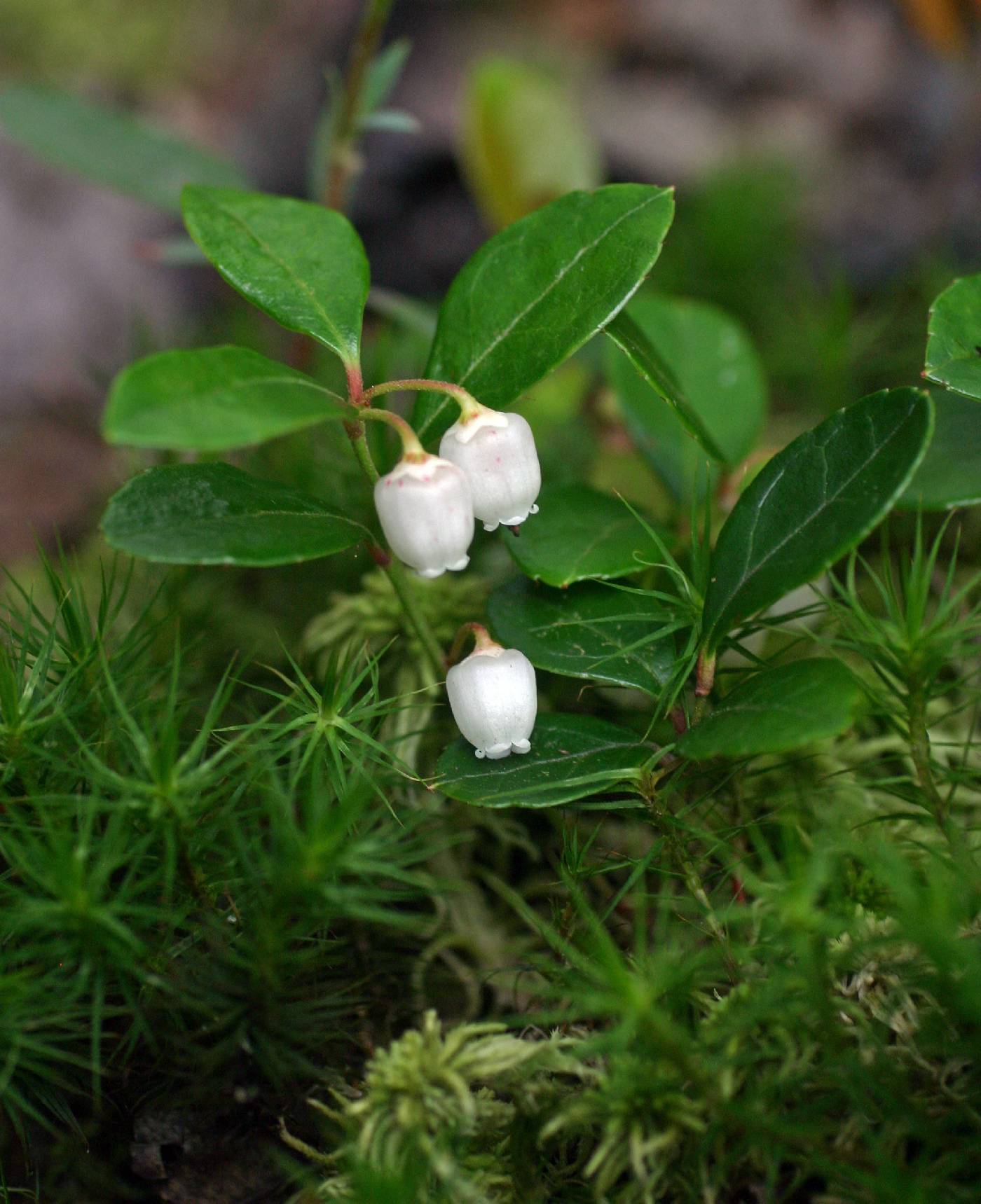Gaultheria
|
Family: Ericaceae |
Shrubs or subshrubs, (sometimes rhizomatous or stoloniferous and rooting at nodes). Stems erect or procumbent; twigs glabrous or hairy. Leaves persistent, aromatic; blade ovate, elliptic, or orbiculate to subcordate or reniform, coriaceous, margins serrate, crenate, or ciliate, plane or revolute, surfaces glabrous or hairy; venation reticulodromous or brochidodromous. Inflorescences axillary, racemes, 2-12-flowered, sometimes flowers solitary; (bracteoles closely subtending flowers). Flowers: sepals (4-)5, connate basally to nearly their entire lengths, (sometimes exceeding petals), ovate, deltate, or cordate; petals (4-)5, connate ca. 1/2 to nearly their entire lengths, white or cream to pink, corolla urceolate to campanulate, lobes much shorter than tube; stamens 8 or 10, included, (inserted at base of ovary); filaments straight, flattened, usually widest proximally, glabrous or hairy, sometimes papillose, without spurs; anthers with 2-4 awns or without awns, dehiscent by pores with ventral slits, (white disintegration tissue present dorsally along connective); pistil 4-5-carpellate; ovary 5-locular; stigma truncate or capitate. Fruits capsular, 5-valved, globose, fleshy, (surrounded by persistent, fleshy calyx). Seeds 20-80+, ovoid; testa smooth. x = 11, 12, 13. Gaultheria is characterized by its fruit and by the stamens having flattened filaments and awned anthers. All of the species are woody to varying degrees; the growth form varies from erect or spreading shrubs to procumbent or creeping and mat-forming. Eastern Asia and the Andes mountains of South America are centers of diversity for this genus. In North America, the fruits and leaves of Gaultheria are a food source for wildlife, and native peoples have medicinal and food uses for some species. Oil of wintergreen (methyl salicylate) is found in the leaves and fruits of some species.
Fls 4-5-merous; cal closely subtended by 2 bracteoles, campanulate to saucer-shaped, deeply divided; cor tubular to campanulate, shallowly lobed; stamens included; filaments short, flat; anthers oblong, the pollen-sacs separate or nearly so, each tipped by 2 erect awns; ovary 4-5-locular, wholly or partly superior; style short, columnar; stigma truncate; capsule thin-walled, completely enclosed in the fleshy, white or colored, accrescent cal, forming a dry or mealy berry-like fr with a characteristic flavor; erect to creeping shrubs with alternate, persistent lvs and usually white fls in racemes or panicles or (in our spp.) solitary in or just above the axils. 150, widespread. Gleason, Henry A. & Cronquist, Arthur J. 1991. Manual of vascular plants of northeastern United States and adjacent Canada. lxxv + 910 pp. ©The New York Botanical Garden. All rights reserved. Used by permission. |

